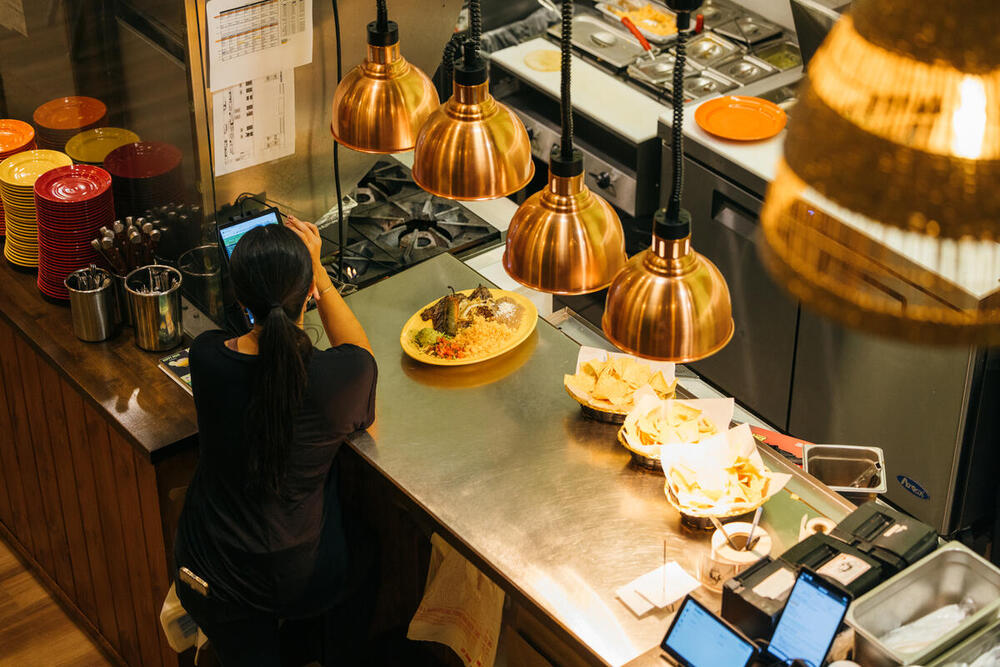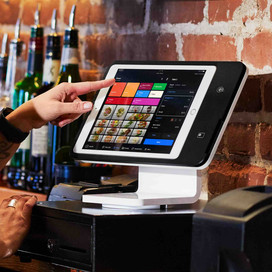Table of contents
Consumers don’t like surprise charges. We’d all prefer to pay exactly what’s advertised. But rising food and labor costs can make it hard for restaurant owners to absorb every expense. Alternatively, baking all costs directly into menu prices can lead to sticker shock, especially when compared to competitors. This is why many restaurants add fees at checkout instead. The problem is that these fees are unpalatable to many consumers. According to the 2025 Square Future of Restaurants report, more than half of consumers said that they disapprove of charges for credit card usage (59%), kitchen appreciation fees (53%), and preset tipping options (52%). Yet more than a third of restaurant operators are charging these exact fees.
Meanwhile, more than a dozen states, including California, Colorado, and Pennsylvania, have proposed bills that require businesses to disclose all mandatory fees up front on advertising materials, excluding taxes and government-imposed fees. This means customers would see the full cost of their meal before they even place an order, bringing back the sticker shock. This leaves restaurant operators walking a fine line: If you pass on too many costs, you risk driving customers away. If you absorb them all, your already thin margins might disappear entirely.
So how do you introduce fees in a way that’s fair both to your business and to your customers and communicate them transparently? Let’s break down the most common restaurant fees, how they impact your bottom line, and the best ways to implement them without upsetting your guests.
Credit or debit card usage fees

When customers pay with a credit or debit card, payment providers charge processing fees that typically range from 1.5% to 3.5%. Some restaurants choose to pass this cost on to customers by adding a card usage fee at checkout. However, this approach isn’t legal everywhere. In all 50 states debit card surcharges are illegal. For credit cards some states prohibit surcharges on card payments, while others require clear disclosure before customers order. This may be why consumers surveyed in the 2025 Square Future of Restaurants report said that they prefer to pay with debit cards (88%), followed by credit cards (86%) and cash (82%).
If you decide to implement this fee, ensure full compliance with state and local regulations. Some jurisdictions require restaurants to disclose those fees explicitly. Be clear and up front about how the fee is applied, displaying notices at the point of sale and on receipts to maintain transparency and avoid customer confusion.
Loyalty programs can also help soften resistance. Consider rewarding customers who pay with your preferred methods with discounts or bonus points. This way you encourage more customers to use those payment methods.
Kitchen appreciation fees or living wage surcharges

Unlike servers, who benefit from tips, kitchen staff — cooks, dishwashers, prep workers — often don’t receive additional gratuities. A kitchen appreciation fee is a service charge added to help bridge the pay gap between front-of-house and back-of-house employees. With labor costs rising and minimum wages increasing, many restaurants are turning to this fee as a way to support fair wages without drastically increasing menu prices. Restaurants generally set this fee at a fixed percentage of the bill (e.g., 3%–5%). However, many customers may not understand why they are paying it, as this Reddit thread shows.
Transparency is crucial. Clearly label the charge on menus and receipts with a brief explanation. Consider allowing customers to opt in rather than making it automatic, which can improve guest perception.
To avoid charging this fee completely, you could consider tip-pooling strategies to ensure back-of-house staff get a share of the tips. Square Staff management tools support flexible tip distribution methods that allow you to allocate a portion of tips to kitchen staff. For example, you can set out a percentage of tips for back-of-house staff by toggling them as tip-eligible on the Square Dashboard.
Minimum tip settings when paying
Minimum tip settings are preset tipping suggestions (e.g., 18%, 20%, 25%) displayed when customers pay digitally. It encourages fair tipping and helps servers earn a living wage, especially in states where tipped wages are lower than the standard minimum wage. Customers typically have the option to change or bypass the preset tip, but the default settings strongly influence their choices.
When implementing minimum tips, keep in mind that customers don’t like feeling pressured, so it’s important to strike the right balance. Avoid making the lowest tip option feel unreasonable. For example, a minimum of 20% may feel forced. Always provide a “custom tip” option for flexibility. With Square Payment tools, you can set smart tip or percentage amounts and also allow customers to enter a tip amount they choose.
Service fees
This is a percentage-based fee (e.g., 10%–20%) added to the bill, sometimes replacing traditional tipping. It covers operational costs, allows for more predictable wages, and reduces reliance on tipping. Many restaurants apply service fees automatically, and it can confuse customers who are used to tipping.
If you charge a service fee, clearly explain its purpose on menus and receipts (e.g., “This service fee ensures fair wages for our team”). Clarify whether the fee replaces tipping or is an additional charge. Train staff to address customer questions confidently so there’s no confusion.
Reservation fees and deposits
No-shows and last-minute cancellations can be costly, especially for small or high-demand restaurants. According to an OpenTable analysis, as few as six no-shows can wipe the profits of a 40-seat restaurant. Some operators now charge a reservation fee to encourage commitment. Some restaurants only charge reservation fees for large parties or during peak hours, and fees may be refundable or nonrefundable.
To minimize friction, position reservation fees as a benefit (e.g., “Secure your spot during busy hours”). If possible, apply the fee as a credit toward the final bill rather than a separate charge. Clearly communicate refund policies up front (e.g., “Refundable if canceled 24+ hours in advance”).
Important considerations before implementing fees
Beyond adding fees, consider other ways to balance costs and customer experience.
It may be best to raise your prices.
There’s a limit to how many extra charges customers will tolerate before they push back. Instead of stacking multiple fees, you might be better off adjusting menu prices to account for rising costs. A well-thought-out price increase can be less frustrating for diners than a long list of add-ons.
Adopt digital menus.
If you frequently adjust prices or update menu items, switching to a digital menu (via QR codes or an online menu) eliminates the need for costly reprints. It also allows you to adjust pricing dynamically based on supply costs or demand.
Find ways to reduce costs and increase efficiency.
Invest in restaurant management tools such as self-service kiosks, kitchen display systems, inventory management tools, and point-of-sale systems to improve efficiency. Self-service kiosks reduce labor costs by allowing customers to place their own orders, minimizing the need for front-of-house staff. Crepes Bonaparte, a food truck in California, adopted Square Kiosk as a way to manage labor costs. With the kiosk the business can run with just one staff member instead of two during certain shifts. By adopting a Square Kitchen Display System, Bagelshop cut its ticket times in half, served customers faster, and reduced wait times.
Understand if your restaurant business is profitable
Whether you’re a new restaurant owner or run an existing restaurant, it’s important to understand whether you’re making money and how much profit to expect from each sale. Test out our profitability analysis tool to get critical insights, helping you run a successful restaurant business.
Balancing fees with customer experience
Fees are currently an inevitable part of restaurant pricing, but they don’t have to be a source of frustration for customers. The key is transparency, fairness, and clear communication. Whether you’re adding a credit card surcharge, a living wage fee, or a service charge, your guests should always know what they’re paying and why. When done thoughtfully these strategies can help you maintain profitability while keeping customers happy — and that’s a win for everyone.
![]()












